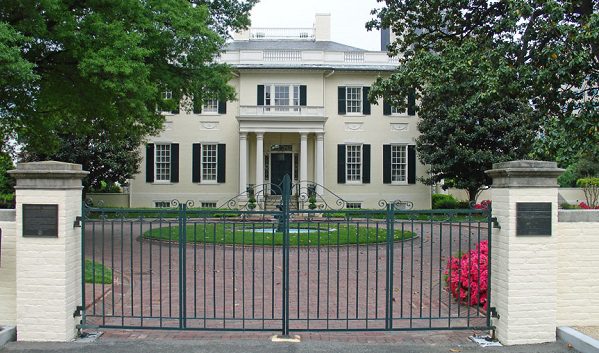
Over in the great state of Virginia where I live, I was angered to read this news today about the ruckus being raised by old Virginians over Gov. Terry McAuliffe’s plan to build a wheelchair ramp at the Virginia Executive Mansion. When people say that installing a wheelchair ramp is tantamount to defacing a historical building, when former first ladies argue that a ramp will “needlessly threaten” the historical look of a mansion – well that’s a major problem. Since when does aesthetics trump accessibility, inclusion and plain old human decency? I was at the governor’s mansion at the invitation of Gov. McAuliffe in the summer for an event. If I had brought along my 15-year-old autistic son, would he have been too upsetting to the aesthetics of the mansion for these Virginian historical preservationists? I hardly think Gov. McAuliffe would’ve had a problem with it. Why should anyone else?
David M. Perry, a journalist and professor who covers disability issues, filed this post:
“Roxane Gilmore, former first lady of Virginia, believes that disabled people should enter the governor’s mansion through the basement, for “aesthetic” reasons.
A plan to build a wheelchair ramp at the Virginia Executive Mansion is turning into a tussle between old and new Richmond, with Gov. Terry McAuliffe saying the alteration will create a more dignified entrance for disabled guests and a former first lady raising alarm that the ramp needlessly threatens the historic character of the 200-year-old mansion.
The governor and first lady Dorothy McAuliffe announced the ramp project last month, calling it an improvement on the mansion’s existing method of wheelchair access: an elevator from the basement.
In response, Roxane Gilmore, the wife of former governor and current Republican presidential candidate Jim Gilmore, has circulated a letter among historic preservationists in which she characterizes the ramp as unnecessarily intrusive on the nation’s oldest continuously occupied governor’s residence. Several docents, the guides who lead mansion tours, were taken aback when the ramp plan was announced.
“A lot of us are Richmond natives,” said Betty Markham, a docent for 25 years who, like many of the guides, is a retired teacher affiliated with a women’s club. “And we just don’t want to see it defaced.”
For Markham, accessibility is “defaced.” Meanwhile, Gilmore believes that an elevator from the basement is equal access. I was also struck by this further quote from Markham:
“We just don’t understand the need for it. It’s just a real unattractive thing for the mansion,” said Markham. “You don’t see this at Mount Vernon, the White House, Williamsburg. You don’t see this at other historical places.”
Maybe you should? You do at the White House. What if Virginia has a disabled governor some day, would they have to enter their house from the basement? Undoubtedly, that possibility has never occurred to Gilmore or Markham.
As Gilmore herself says, “It belongs to the people of the commonwealth.” If that’s true, than all the people of the commonwealth deserve equal access.
Principle 1: Equality is more important than aesthetics and sight lines.
Principle 2: Someday, inaccessible buildings will both strange and antiquated.
Principle 3: Ramps can be beautiful, sweeping, architectural features. They always make me smile.”
This piece originally appeared on “How Did We Get Into this Mess,” a blog by David M. Perry focusing on language, power and disability issues.











